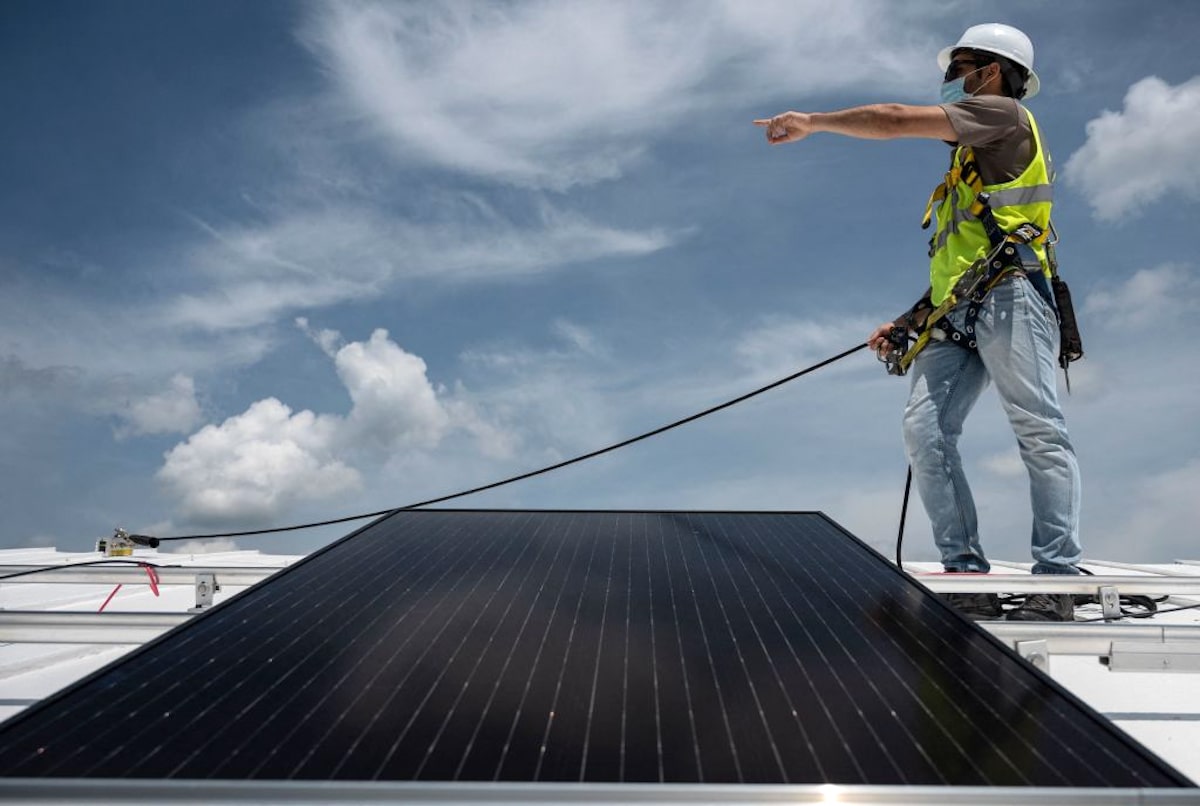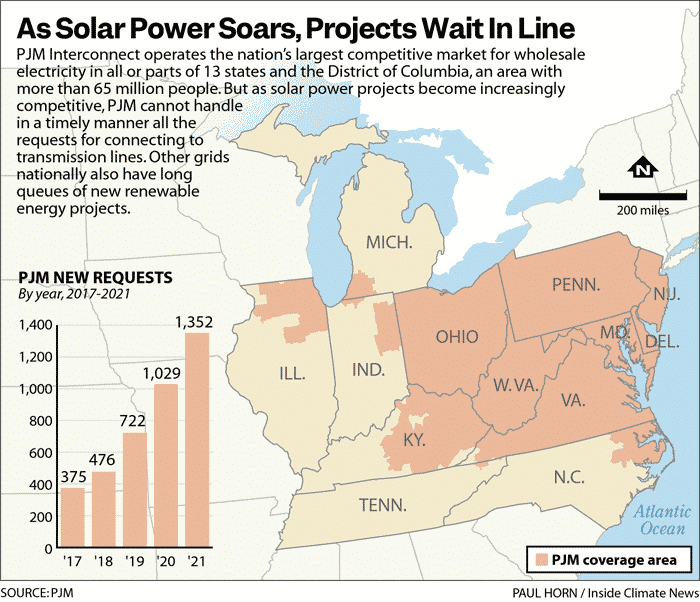
Largest U.S. Grid Operator Can’t Keep Up With New Solar Projects

The largest electrical grid operator in the U.S. is seeking to block all new connections into its multistate transmission network, most of them new solar projects, while it works through its 1,200-project backlog, Inside Climate News reports.
PJM Interconnection’s proposal, released late last month, is driven by the economic competitiveness of solar energy and the ensuing rapid increase in the number of new solar energy installations seeking to connect to the grid.
The pause would force developers into a financial bind, derail city and state sustainability plans, and throw a wrench in the gears of the Biden administration’s goal of powering the U.S. grid with 80% renewable energy by 2030.
As reported by Inside Climate News:
Last year, Americans for a Clean Energy Grid, a national group advocating for modernization of high voltage transmission, made the case in a report that backlogs were “needlessly increasing electricity costs for consumers by delaying the construction of new projects which are cheaper than existing electricity production. Because most of these projects are located in remote rural areas, this backlog is harming rural economic development and job creation.”
How PJM resolves its backlog could have implications for the rest of the country, said Jeff Dennis, managing director and general counsel for Advanced Energy Economy, a trade group for clean energy businesses.
“PJM has traditionally been a bellwether,” he said. “Things that PJM puts into place and that FERC approves for PJM often become models for other regions,” he said.
A lot is at stake, he added.
“Delayed interconnection queues and backlogs in bringing new generation on is one of the most significant barriers to state clean energy policies and the jobs and economic development that states are aiming to achieve through transitioning their grids to advanced energy technologies,” he said.

For a deeper dive:
Inside Climate News
For more climate change and clean energy news, you can follow Climate Nexus on Twitter and Facebook, sign up for daily Hot News, and visit their news site, Nexus Media News.

 233k
233k  41k
41k  Subscribe
Subscribe 